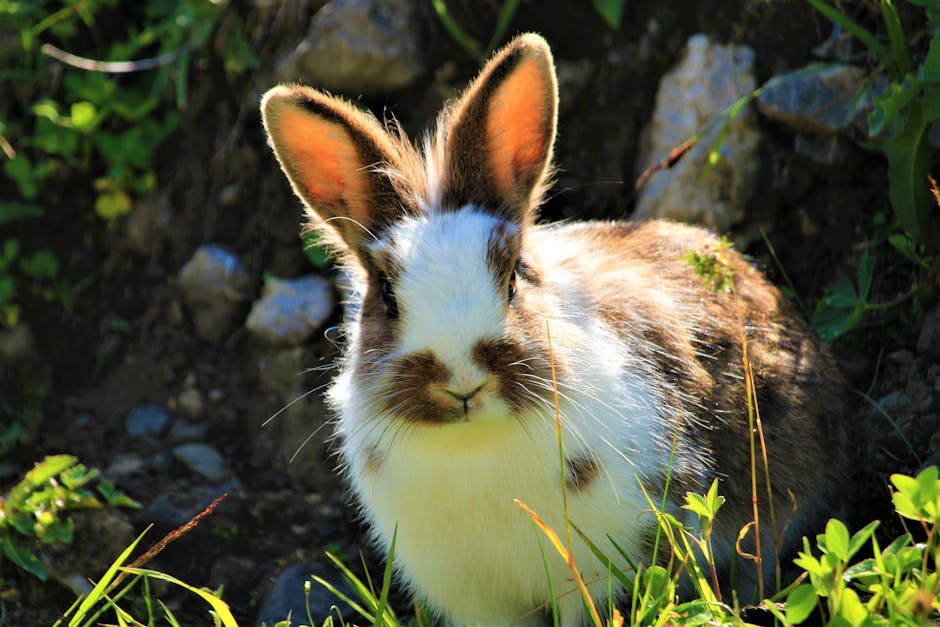Bringing a pet rabbit into your home can be an exciting and rewarding experience. These adorable, furry creatures make wonderful companions, but they also require specific care and attention. If you’re new to rabbit ownership, learning how to take care of a pet rabbit is essential for ensuring your new friend’s health and happiness. In this comprehensive guide, we’ll explore everything you need to know to provide the best care for your bunny companion.
Housing Your Rabbit
Creating a Comfortable Living Space
One of the first steps in learning how to take care of a pet rabbit is setting up an appropriate living space. Rabbits need a spacious enclosure that allows them to hop, stretch, and play. A cage or hutch should be at least four times the size of your rabbit when they’re fully stretched out. Many rabbit owners opt for a multi-level habitat or even dedicate a rabbit-proofed room to their furry friend.
Bedding and Accessories
Choose safe, absorbent bedding materials like wood pellets or paper-based products. Avoid cedar or pine shavings, as they can be harmful to rabbits. Equip the enclosure with a litter box, food and water dishes, and plenty of toys to keep your rabbit entertained.
Nutrition and Feeding
A Balanced Diet for Bunnies
Proper nutrition is crucial when learning how to take care of a pet rabbit. A rabbit’s diet should consist primarily of hay, which should be available at all times. Timothy hay is an excellent choice for adult rabbits, while younger bunnies may benefit from alfalfa hay. Supplement their diet with a small amount of fresh vegetables and a limited quantity of high-quality rabbit pellets.
Water and Treats
Always provide clean, fresh water in a bowl or bottle. Treats should be given sparingly, with fruits and certain vegetables offered as occasional rewards. Remember, a balanced diet is key to preventing obesity and maintaining your rabbit’s health.
Exercise and Enrichment
Playtime and Socialization
Rabbits are active animals that require daily exercise and mental stimulation. Allow your rabbit supervised out-of-cage time in a rabbit-proofed area. This not only provides physical activity but also strengthens your bond with your pet. Engage your rabbit with toys, tunnels, and cardboard boxes to explore.
Bonding Activities
Spend time interacting with your rabbit through gentle petting and grooming. Many rabbits enjoy being brushed, which also helps keep their coat healthy. Remember, patience is key when building trust with your new pet.
Did you know…
Rabbits can be trained to use a litter box, much like cats? This makes them excellent indoor pets and simplifies cleaning routines for owners.
Health and Grooming
Regular Check-ups
Part of learning how to take care of a pet rabbit includes understanding their health needs. Schedule regular check-ups with a rabbit-savvy veterinarian. These visits are crucial for detecting any potential health issues early and keeping your rabbit up-to-date on necessary vaccinations.

Grooming Essentials
Rabbits are generally clean animals, but they still benefit from regular grooming. Brush your rabbit at least once a week to remove loose fur and prevent matting. During shedding seasons, you may need to increase grooming frequency. Trim your rabbit’s nails as needed, or have a veterinarian do it if you’re unsure.
Common Health Concerns
Dental Health
Rabbits’ teeth grow continuously throughout their lives. Provide plenty of hay and safe chew toys to help wear down their teeth naturally. Watch for signs of dental problems, such as decreased appetite or drooling.
Gastrointestinal Issues
Rabbits have sensitive digestive systems. Monitor your rabbit’s eating habits and droppings closely. Any changes in appetite or stool consistency could indicate a health problem that requires veterinary attention.
Creating a Safe Environment
Rabbit-Proofing Your Home
If you plan to let your rabbit explore outside their enclosure, it’s essential to rabbit-proof the area. Cover or remove electrical cords, toxic plants, and any small objects that could be ingested. Block off areas where your rabbit might get stuck or injured.
Temperature Control
Rabbits are sensitive to extreme temperatures. Keep your pet in a comfortable environment between 60-70°F (15-21°C). Avoid placing the enclosure in direct sunlight or near drafts.
Bonding with Your Rabbit
Building Trust
Building a strong bond with your rabbit takes time and patience. Spend quiet time near your rabbit’s enclosure, speaking softly and offering treats. Gradually increase physical interaction as your rabbit becomes more comfortable with your presence.
Understanding Rabbit Body Language
Learn to read your rabbit’s body language to understand their needs and emotions better. Happy rabbits may “binky” (jump and twist in the air), while flattened ears and a thumping foot can indicate fear or displeasure.
Conclusion
Learning how to take care of a pet rabbit involves understanding their unique needs and providing a loving, safe environment. With proper housing, nutrition, exercise, and medical care, your rabbit can live a happy, healthy life as a cherished member of your family. Remember, each rabbit has its own personality, so be patient and enjoy getting to know your new furry friend. By following these rabbit care tips, you’ll be well on your way to becoming an excellent rabbit owner. Don’t forget to share your rabbit care journey on social media and inspire others to provide the best care for these delightful pets!


